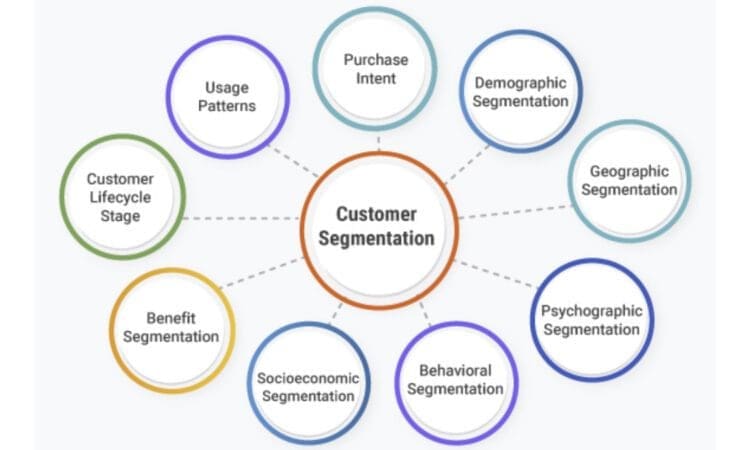Customer market segmentation is a strategic process where businesses divide their broad customer base into distinct groups with shared characteristics. This approach enables companies to tailor their marketing efforts, products, and services to meet the specific needs of each segment, thereby enhancing customer satisfaction and business performance.
The Importance of Customer Market Segmentation
Implementing customer market segmentation offers several benefits:
- Improved Marketing Effectiveness: By understanding the unique preferences of each segment, businesses can create targeted marketing campaigns that resonate more deeply with their audience.
- Enhanced Customer Engagement: Tailored strategies foster a stronger connection between the brand and its customers, leading to increased loyalty and retention.
- Optimized Resource Allocation: Focusing efforts on the most profitable segments ensures efficient use of marketing resources and maximizes return on investment.
Key Types of Customer Market Segmentation
1. Demographic Segmentation
- Categorizing customers based on quantifiable characteristics such as age, gender, income, education, and occupation.
- Example: A company might target high-income individuals for premium products.
2. Geographic Segmentation
- Dividing customers based on their physical location, such as country, region, or city.
- Example: A business might offer different products or services tailored to regional preferences or climates.
3. Psychographic Segmentation
- Focuses on the psychological aspects of consumer behavior, including values, interests, lifestyles, and personality traits.
- Example: A brand focusing on sustainability can appeal to environmentally conscious consumers by highlighting eco-friendly practices and products.
4. Behavioral Segmentation
- Grouping customers based on behaviors such as purchasing habits, brand loyalty, or product usage rates.
- Example: A streaming service may offer personalized recommendations based on viewing history.
Demographic Customer Segmentation
Segmenting customers demographically allows businesses to tailor their offerings to meet the specific needs of different groups. For example, a fashion retailer might market certain clothing lines to younger audiences while promoting more classic styles to older consumers. Understanding these distinctions helps in crafting messages that appeal directly to each demographic segment.
Psychographic Customer Segmentation
Delving into psychographic factors provides deeper insights into customer motivations. By analyzing lifestyles, interests, and values, companies can develop products and marketing strategies that align with the inner drivers of their target audience.
- Example: A travel agency may offer luxury packages to affluent travelers while promoting adventure tourism to thrill-seekers.
Behavioral Customer Segmentation
Behavioral segmentation examines how customers interact with products and brands. By analyzing factors like purchase frequency, brand loyalty, and usage patterns, businesses can identify opportunities to enhance customer satisfaction and increase sales.
- Example: Offering exclusive rewards to frequent buyers can incentivize continued patronage and foster brand loyalty.
Geographic Customer Segmentation
Geographic segmentation involves tailoring marketing efforts to meet the needs of customers in different locations. This can include adapting products to suit local tastes or adjusting marketing messages to resonate with regional cultures.
- Example: A food company might offer spicier versions of its products in regions where consumers prefer bold flavors.
How Businesses Use Customer Market Segmentation
Successful companies leverage customer market segmentation to refine their strategies:
- Personalized Marketing: By understanding the specific characteristics of each segment, businesses can create personalized marketing messages that resonate with the target audience.
- Product Development: Insights from segmentation inform the creation of products that meet the unique needs of different customer groups.
- Enhanced Customer Service: Tailoring customer service approaches to the preferences of each segment improves overall customer satisfaction.
Challenges and Best Practices in Customer Segmentation
Challenges:
- Data Collection and Analysis: Gathering accurate and comprehensive data requires significant resources and expertise.
- Dynamic Consumer Behavior: Customer preferences can change over time, necessitating continuous monitoring and adaptation of segmentation strategies.
Best Practices:
- Invest in Data Analytics: Utilizing advanced analytics tools can help in effectively processing and interpreting customer data.
- Regularly Update Segmentation Models: Keeping segmentation strategies current ensures they remain relevant and effective.
- Ensure Ethical Data Use: Maintaining transparency and respecting customer privacy fosters trust and compliance with regulations.
Conclusion
Customer market segmentation is a vital tool for businesses aiming to understand and meet the diverse needs of their audience. By implementing effective segmentation strategies, companies can enhance marketing effectiveness, foster customer loyalty, and drive business growth. Continuous evaluation and adaptation of these strategies are essential to remain responsive to evolving market dynamics.
References
- Li, X., & Lee, Y. S. (2024). Customer Segmentation Marketing Strategy Based on Big Data Analysis and Clustering Algorithm. Link
- A Review on Customer Segmentation Methods for Personalized Marketing (2023). Link
- Zhao, X. (2020). Marketing Segmentation in Consumer Product Industry.
- Sheng, M., Ketron, S., & Wan, X. (2022). Identifying Consumer Segments Based on COVID-19 Pandemic Perceptions and Responses. Link


